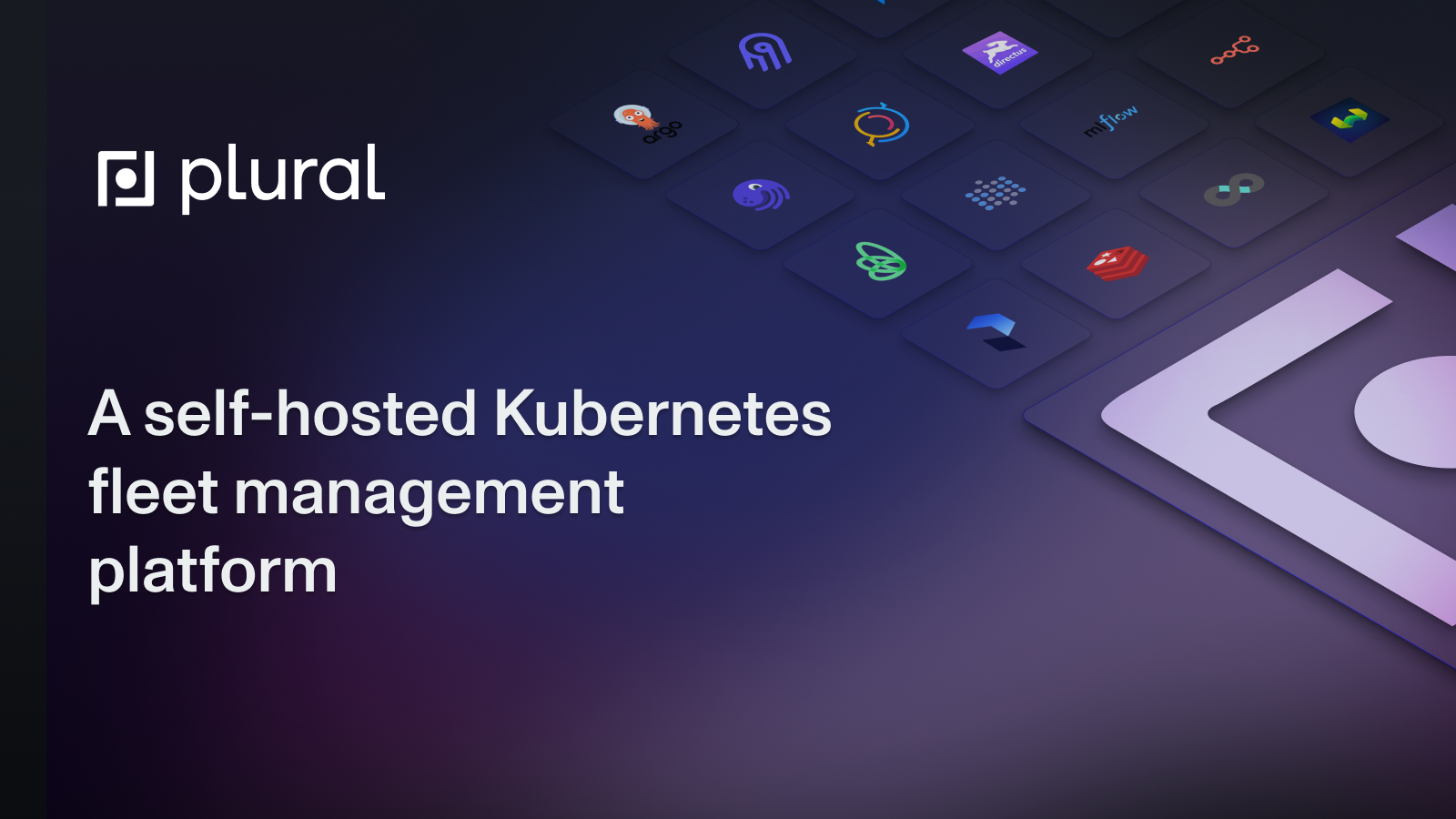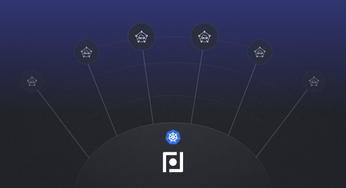
Multi-Cloud Kubernetes: A Practical Guide
Master multi cloud Kubernetes management with this practical guide. Learn strategies, tools, and best practices to streamline operations across cloud providers.
Table of Contents
Multi-cloud Kubernetes is quickly becoming the standard for organizations seeking a flexible and resilient infrastructure. But managing Kubernetes across multiple cloud providers introduces unique challenges. How do you handle the complexity of different tools, APIs, and security policies? This practical guide explores multi-cloud Kubernetes management, offering solutions and best practices for building a successful strategy. We'll cover everything from choosing the right providers to automating your multi-cloud Kubernetes deployments and optimizing costs.
In this post, we will demystify multi-cloud Kubernetes management and provide a clear and concise overview of the key concepts, challenges, and solutions. We'll explore best practices, essential tools, and real-world examples to help you build a successful multi-cloud Kubernetes strategy.
Unified Cloud Orchestration for Kubernetes
Manage Kubernetes at scale through a single, enterprise-ready platform.
Why Choose Multi-Cloud Kubernetes?
Distributing your Kubernetes workloads across multiple cloud providers—a multi-cloud strategy—offers significant advantages in terms of resilience, flexibility, and cost-effectiveness. Let's break down the key reasons why organizations are increasingly embracing this approach.
Reduced Vendor Lock-in and Increased Flexibility
Relying solely on a single cloud provider can lead to vendor lock-in, limiting your ability to negotiate favorable terms and adapt to evolving business needs. A multi-cloud approach with Kubernetes offers a solution. By spreading workloads across different cloud environments, you gain the freedom to choose the best services from each provider, optimizing for performance, cost, and regional availability. This flexibility also protects against outages from a single provider, as highlighted in Spectro Cloud's analysis of multi-cloud Kubernetes trends. If one cloud experiences disruptions, your applications can continue running seamlessly on others, ensuring business continuity. This architectural choice also allows you to leverage the unique strengths of each cloud provider. For example, you might choose one provider for its superior machine learning capabilities while another offers better pricing for storage.
Disaster Recovery and Business Continuity
Multi-cloud Kubernetes strengthens disaster recovery strategies. Distributing your application deployments across multiple clouds creates inherent redundancy. Should a major incident occur with one provider, your operations can seamlessly failover to another, minimizing downtime and ensuring business continuity. This approach provides a robust safety net against regional outages, natural disasters, or other unforeseen events that could impact a single cloud provider. This distributed architecture, as discussed in Spectro Cloud's insights, is crucial for maintaining service availability and meeting customer expectations, even in the face of unexpected disruptions.
Meeting Compliance and Security Requirements
For organizations operating in regulated industries, data sovereignty and compliance are paramount. Regulations and regional laws often mandate storing data within specific geographic locations. Multi-cloud Kubernetes allows you to strategically place workloads in different regions to meet these requirements. This granular control over data location simplifies compliance with regional data governance policies, ensuring your organization adheres to legal and industry standards. Furthermore, distributing data across multiple clouds can enhance security by reducing the impact of a potential data breach at a single provider.
Optimizing Costs and Resource Allocation
While multi-cloud might seem inherently more expensive, it can actually lead to cost savings. Different cloud providers offer varying pricing models and discounts for specific services. With multi-cloud Kubernetes, you can leverage these pricing differences to your advantage. Run workloads requiring high CPU power on a provider with competitive compute pricing, while hosting data-intensive applications on a platform with more affordable storage options. This strategic allocation of resources, guided by cost considerations, can optimize your cloud spending and maximize your return on investment. Industry analyses support this view, showing how organizations can achieve significant cost efficiencies through a well-planned multi-cloud Kubernetes strategy.
Key Takeaways
- Multi-cloud Kubernetes offers flexibility but requires a strategic approach: Distributing workloads lets you select optimal services from different providers, but successful management requires careful planning and the right tools to handle increased complexity.
- Standardization and automation are key to simplifying operations: Using consistent tools and automating key tasks across all cloud environments streamlines management and reduces the risk of errors.
- Monitoring and cost optimization are crucial for success: Track resource utilization, spending, and performance across your multi-cloud deployments to ensure efficiency and meet your business objectives.
What is Multi-Cloud Kubernetes Management?
Defining Multi-Cloud Kubernetes Management
Multi-cloud Kubernetes means running your Kubernetes clusters across several cloud environments. This might involve a combination of public clouds like AWS, Azure, and Google Cloud or a mix of public and private infrastructure. Distributing your workloads across multiple environments offers greater control and flexibility.
This approach also helps you avoid vendor lock-in, preventing you from being tied to a single provider's limitations or pricing. Multi-cloud strategy lets you select the best services from different providers, optimizing for factors like cost, performance, or compliance based on your specific requirements.
Multi-Cloud Kubernetes Architectures
There are several ways to architect your multi-cloud Kubernetes deployments. Two common approaches are the centralized management plane and the federated control plane. Each has its own advantages and trade-offs.
Centralized Management Plane Architecture
With a centralized management plane, you manage all your Kubernetes clusters—regardless of their location—from a single control point. This approach simplifies operations and provides a unified view of your entire Kubernetes estate. This centralized control allows for streamlined policy enforcement, standardized configurations, and easier monitoring across all environments. Enterprise Kubernetes Management Platforms like Anthos and Azure Arc exemplify this architecture.
However, a centralized approach can also create vendor lock-in, tying you to a specific platform's ecosystem. While these platforms aim to abstract away the underlying cloud provider differences, they may have limitations in fully supporting each provider's complete feature set. As Spectro Cloud notes, many enterprises are already using multiple cloud providers, highlighting the increasing need for robust, flexible management solutions. For a solution that prioritizes open-source tooling and avoids vendor lock-in while still providing centralized management, consider Plural.
Federated Control Plane Architecture
In a federated control plane architecture, each Kubernetes cluster retains its own control plane, and they are loosely coupled through a federation layer. This approach offers greater flexibility and avoids the potential single point of failure of a centralized system. HashiCorp's multi-cloud Kubernetes tutorial demonstrates using Terraform and Consul to federate clusters across AWS and Azure, with Consul enabling communication and service discovery between the clusters.
While federation offers more autonomy for individual clusters, it also increases management complexity. You'll need to maintain consistent configurations and security policies across all federated clusters. Day-2 operations like monitoring and upgrades become more challenging as you must coordinate these activities across multiple independent control planes. Discussions on platforms like Reddit highlight that even connecting nodes across different cloud providers can be a significant hurdle in a multi-cloud setup.
Key Components of Multi-Cloud Kubernetes Environments
A well-functioning multi-cloud Kubernetes setup relies on a few key components. First, you'll be using two or more public cloud platforms. Connecting these environments requires setting up secure and reliable networking between your clouds, ensuring seamless communication and data sharing between your clusters.
You'll also need a centralized management system to control and monitor all your clusters, regardless of their location. Platforms like Plural streamline multi-cluster management by providing a single control plane, automating key processes, and offering enhanced visibility across all your clusters.
Finally, consider the tools and services you'll use to manage resources like storage and security across your different cloud environments. These components work together to create a unified and manageable multi-cloud Kubernetes system.
Benefits of Multi-Cloud Kubernetes Management
Running Kubernetes across multiple cloud providers might seem complex, but the payoff can be significant. Let's break down the key advantages:
Gain Flexibility and Vendor Independence
Multi-cloud Kubernetes gives you options. You're not locked into a single provider's services or pricing. This vendor independence lets you select the best tools for each task, whether it's computing power from one provider or a specific database service from another. Need to shift resources quickly? Multi-cloud makes it easier to adapt to changing business needs and avoid getting stuck with a solution that no longer fits. This flexibility is key to staying agile and competitive.
Optimize Costs Across Cloud Providers
Each provider has its own pricing structure, and using multiple clouds lets you find the best deals. You can strategically choose services from different providers—perhaps selecting one for its cost-effective storage and another for its powerful computing capabilities—to optimize your overall cloud spend. This approach helps you avoid vendor lock-in and keeps your costs predictable.
Enhance Resilience and Disaster Recovery
Distributing your workloads across multiple cloud providers creates a safety net for your operations. If one provider experiences an outage or other disruption, your applications can continue running on another cloud, ensuring business continuity. This resilience is crucial for maintaining service availability and meeting your SLAs.
Multi-cloud also simplifies disaster recovery planning. You can easily replicate your systems across different environments, making recovery from unexpected events faster and easier.
Challenges of Multi-Cloud Kubernetes Management
Running Kubernetes across multiple cloud providers offers flexibility and resilience, but it also presents unique challenges. Let's break down some key hurdles you might encounter.
Manage Complex Cross-Cloud Operations
Managing Kubernetes across different cloud environments adds layers of complexity. You're juggling different providers, each with its own quirks, tools, and billing structures. You need to evaluate suitable cloud providers and enable communication between them, essentially building bridges between your clouds. Then there's the task of centralizing management.
How do you efficiently administer your clusters without duplicating efforts and creating extra work for your team? Platforms like Plural offer a unified way to handle deployments, updates, and monitoring across all environments is crucial for streamlined operations. A successful multi-cloud, multi-cluster Kubernetes strategy requires careful planning and execution. Schedule a demo to discover how Plural can support your multi-cloud Kubernetes journey.
Managing Inconsistent Kubernetes Implementations
While Kubernetes aims to standardize container orchestration, managing it across multiple clouds introduces complexities due to inconsistent implementations. Each cloud provider offers its own flavor of Kubernetes, with subtle yet significant differences. For example, variations exist in how node lifecycles are managed. Some providers offer automated lifecycle management, while others require manual intervention. These inconsistencies, though seemingly minor, can lead to operational headaches when managing a large, distributed Kubernetes footprint. Industry analyses confirm that these variations are a core challenge in multi-cloud Kubernetes.
Inconsistent management practices further compound the challenge. Account organization, identity management, and even specific service offerings vary across cloud providers. What works seamlessly on AWS might require a completely different approach on Azure or Google Cloud. This fragmentation necessitates a strategic approach to unify management practices and ensure consistent operations. Experts point out that navigating these inconsistencies is a key hurdle in multi-cloud Kubernetes adoption.
Managing the underlying infrastructure adds another layer of complexity. Networking, compute, and storage must be addressed independently on each platform. A centralized management system becomes crucial for streamlining these operations and mitigating the risks associated with inconsistent implementations. Community discussions highlight tools like Cluster API, Argo CD, Flux, and Rancher, along with multi-cloud solutions from Red Hat and VMware, as helpful resources. However, choosing the right toolset depends on your specific needs and the complexity of your multi-cloud environment. A platform like Plural simplifies these challenges by providing a unified interface for managing deployments, updates, and monitoring across all your cloud environments.
Overcome Networking and Communication Hurdles
Networking in a multi-cloud Kubernetes setup can be tricky. You're dealing with different network topologies, security protocols, and potentially even geographic limitations. Ensuring seamless communication between your clusters, regardless of their location, is paramount.
Solutions for Inter-Cluster Communication
Connecting Kubernetes clusters across different cloud providers requires a robust networking strategy. Let's explore some common solutions that enable seamless communication and service discovery in a multi-cloud environment.
Service Mesh with Consul
Consul, a service networking platform, offers a robust solution for inter-cluster communication. By establishing a service mesh, Consul facilitates service discovery and secure communication between clusters, regardless of their underlying cloud infrastructure. It acts as a central registry, allowing services in different clusters to locate and connect to each other. This simplifies inter-cluster communication and enhances security by managing traffic routing and access control. A HashiCorp tutorial provides a practical example of using Consul with Terraform to deploy federated multi-cloud Kubernetes clusters.
CNI Solutions like Cilium
Container Network Interface (CNI) solutions like Cilium offer another effective approach. Cilium uses eBPF to provide efficient and secure networking, enabling communication between pods in different clusters as if they were in the same network. This simplifies network management and improves performance by leveraging the underlying capabilities of the host operating system. Cilium, along with other CNI solutions, addresses the crucial challenge of connecting nodes across disparate cloud providers, as highlighted in a Reddit discussion on multi-cloud k3s deployments.
Other Networking Approaches (e.g., Tailscale, ZeroTier)
Tailscale and ZeroTier provide alternative approaches to multi-cloud Kubernetes networking. These tools create secure virtual networks that connect your clusters, simplifying network management and reducing complexity. Recent integrations with platforms like k3s, mentioned in the same Reddit thread, further streamline the process of establishing and managing cross-cloud networks. These integrations simplify network connectivity and ensure secure communication between your Kubernetes clusters.
Choosing the right networking solution depends on your specific needs and infrastructure. Factors to consider include security requirements, performance expectations, and the complexity of your multi-cloud environment. Evaluating these factors will help you select the best approach for connecting your Kubernetes clusters and enabling seamless communication across your multi-cloud infrastructure. For a comprehensive solution that simplifies multi-cloud Kubernetes management, including networking, consider exploring Plural.
Ensure Security and Compliance Across Environments
Security and compliance become even more critical in a multi-cloud environment. You're responsible for maintaining consistent security policies and meeting regulatory requirements across all your cloud providers. This means implementing robust access controls, encrypting sensitive data, and regularly auditing your systems. For instance, platforms like Plural help you maintain compliance in even the most complex environments. Learn more at Plural.sh or book a demo.

Simplify Storage Management
Managing storage in a multi-cloud Kubernetes environment presents its own set of complexities. You're essentially dealing with multiple storage systems, each with its own interface and management tools. This can make it difficult to maintain a clear overview of your storage resources and ensure efficient provisioning and utilization. If you're using persistent storage, you'll need to manage multiple Container Storage Interface (CSI) drivers, adding another layer of complexity to your operations.
Challenges of Distributed Storage in Multi-Cloud
Managing storage in a multi-cloud Kubernetes environment presents its own set of complexities. You're essentially dealing with multiple distinct storage systems, each with its own interface, management tools, and quirks. This can make it difficult to maintain a clear overview of your storage resources and ensure efficient provisioning and utilization. One cloud provider might offer excellent performance for block storage, while another excels at object storage. Choosing the right storage type for your workload and then managing it effectively across different providers requires careful planning and potentially specialized expertise.
If you're using persistent storage, which allows your data to survive pod restarts and failures, you'll likely need to manage multiple Container Storage Interface (CSI) drivers. CSI drivers act as a bridge between Kubernetes and various storage providers. While CSI offers a standard interface, managing different drivers for each cloud adds another layer of complexity to your operations. Keeping track of driver versions, compatibility, and specific configuration requirements for each cloud can quickly become a significant administrative burden.
Furthermore, trying to implement a truly distributed storage solution across multiple clouds, where data is synchronized and accessible from any cluster, is often technically challenging and expensive. Latency between cloud providers can impact application performance, and the costs associated with data transfer and synchronization can quickly escalate. These challenges often lead organizations to seek simpler, albeit less flexible, alternatives. For example, a company like Plural can help manage this complexity.
Local Storage Solutions
Because distributing storage across multiple clouds is difficult and often expensive, many organizations opt for localized storage solutions within each cloud. This means that each Kubernetes cluster relies on storage resources provisioned within the same cloud provider. While this approach simplifies management within each individual cloud environment, it can introduce limitations in terms of data portability and disaster recovery.
For example, if a cloud provider experiences an outage, the data stored locally within that cloud becomes inaccessible. Restoring that data might require complex and time-consuming procedures. Additionally, if you need to migrate workloads between clouds, moving data from one local storage solution to another can be a significant undertaking. While local storage offers a simpler starting point, it's essential to consider the potential long-term implications for data mobility and resilience. Using a platform like Plural can help mitigate some of these challenges by providing a unified management layer across your multi-cloud environment.
Essential Tools for Multi-Cloud Kubernetes Management
Managing Kubernetes across multiple cloud providers requires the right tools. From leveraging Kubernetes-native solutions to exploring third-party platforms and integrating AI. Let's break down essential tools to simplify your multi-cloud Kubernetes journey.
Leverage Kubernetes-Native Tools
Start with the basics. Kubernetes offers native tools and APIs designed for cluster management. Tools like kubectl provide a command-line interface for interacting with your clusters, regardless of their location. Using these standard tools ensures consistency and portability across your multi-cloud environment. For monitoring, Kubernetes offers metrics that provide insights into resource utilization and the overall health of your clusters. Sticking with standard Kubernetes tools helps you avoid vendor lock-in and maintain flexibility.
GitOps Tools (e.g., Argo CD, Flux)
GitOps has emerged as a powerful paradigm for managing Kubernetes deployments, and tools like Argo CD and Flux are leading the charge. These tools automate deployments and configuration management by using Git as the single source of truth. They continuously monitor your Git repositories for changes and automatically synchronize your Kubernetes clusters to match the desired state defined in your Git configuration files. This approach simplifies multi-cloud deployments by providing a consistent workflow across all environments.
Argo CD offers a declarative approach to application deployments and a web UI for visualizing and managing deployments. It also supports multi-cluster management, allowing you to control multiple Kubernetes clusters from a single Argo CD instance. Flux is known for its tight Git integration and its ability to manage not just applications, but also the underlying Kubernetes resources. Choosing the right tool often depends on specific requirements and team preferences, as discussed in various comparisons.
Using GitOps tools like Argo CD or Flux brings several benefits to multi-cloud Kubernetes. It simplifies deployments, reduces manual errors, and improves the overall stability and reliability of your infrastructure. By leveraging Git's version control capabilities, you gain a clear audit trail of all changes, making it easier to track and rollback deployments when necessary. This streamlined approach is essential for managing the complexity of multi-cloud environments.
Explore Third-Party Management Platforms
As your multi-cloud Kubernetes deployments grow, consider using third-party management platforms like Plural to streamline your multi-cloud Kubernetes operations. These platforms offer centralized dashboards and advanced features for managing multiple clusters across different cloud providers.
Considerations for Choosing a Platform
Selecting the right platform for managing your multi-cloud Kubernetes deployments is a critical decision. Carefully evaluate your needs and consider several key factors before committing to a solution.
Open Source vs. Commercial Solutions
Both open-source and commercial platforms offer solutions for multi-cloud Kubernetes management. Open-source tools often provide greater flexibility and control, allowing you to customize the platform to your specific needs. However, they may require more setup and maintenance, and community support might be your primary resource for troubleshooting. Commercial platforms, like Plural, typically offer more comprehensive features, dedicated support, and a streamlined user experience, but they come with a price tag. Consider your team’s expertise and resources when deciding which approach best suits you.
Features and Integrations
Look for platforms that offer features specifically designed for multi-cloud management, such as centralized dashboards, automated deployments, and cross-cloud monitoring. Plural, for example, streamlines these operations with a single control plane and enhanced visibility across all your clusters. Integration with your existing tools and workflows is also crucial. The platform should seamlessly integrate with your CI/CD pipelines, monitoring tools, and other essential services to avoid disruptions and maintain a consistent workflow. Consider whether the platform supports the specific cloud providers and Kubernetes distributions you're using.
Scalability and Support
As your Kubernetes deployments grow, your management platform needs to scale seamlessly. Ensure the platform can handle an increasing number of clusters and workloads without performance degradation. Reliable support is also essential, especially when dealing with complex multi-cloud environments. Whether you choose an open-source or commercial solution, having access to timely and effective support can save you valuable time and resources when troubleshooting issues. A platform like Plural offers enterprise-grade support to help you navigate the challenges of multi-cloud Kubernetes.
Integrate AI and Machine Learning
AI and machine learning are transforming Kubernetes management. AI-powered tools can automate tasks like resource optimization, scaling, and even predictive maintenance, reducing operational costs and enhancing the overall performance of your Kubernetes clusters. For instance, AI-powered platforms like platforms like Plural simplify multi-cloud Kubernetes management with unique real-time telemetry to automate diagnostics, receive precise fix recommendations, and keep your team informed with instant insights across all clusters. Schedule a demo to see it in action today!
Best Practices for Multi-Cloud Kubernetes Management
Managing Kubernetes across multiple cloud providers can feel overwhelming. Different environments, tools, and security protocols make consistency a challenge. But these best practices will help you wrangle the complexity.
Standardize and Maintain Consistency
Using standard Kubernetes tools and APIs is key. Avoid proprietary tools from individual cloud providers; they can create vendor lock-in and limit flexibility. Sticking with standard Kubernetes ensures your applications run seamlessly across any cloud, simplifying management and portability. It’s like having a universal language all your cloud providers understand. This approach simplifies cluster management, regardless of location.
Automate Deployments and Updates
Automation is essential in a multi-cloud world. Automating deployments and updates across your clusters saves time and reduces human error. Imagine updating all your Kubernetes deployments, regardless of the cloud provider, with a single click. This level of automation improves reliability and allows you to adapt quickly to changing business needs. Automating operations with a platform like Plural is crucial for improving efficiency and agility in multi-cloud management.
Monitor and Observe Comprehensively
You can't manage what you can't see. Comprehensive monitoring and observability are crucial for understanding the performance and health of your multi-cloud Kubernetes deployments. A clear view of resource utilization, application performance, and potential issues across all your clusters is essential for proactive problem identification and resolution.
Prioritize Security
Security should always be a top priority, especially in a multi-cloud environment. Consistent security policies and practices across all your cloud providers are non-negotiable. This includes access control, network security, and vulnerability management. A security breach in one cluster can impact your entire infrastructure
Implement Infrastructure as Code (IaC)
Infrastructure as Code (IaC) simplifies multi-cloud Kubernetes management. IaC lets you define and manage your infrastructure through code, enabling version control, automation, and reproducibility. This makes it easy to spin up new clusters, replicate existing ones, and ensure consistency across all environments. Advanced IaC management platforms like Plural streamlined GitOps strategy for Terraform, Pulumi, or Ansible stacks, automating deployments from any Git repository upon commit. Learn more at Plural.sh or book a demo today!
Choosing the Right IaC Tool
Managing infrastructure across multiple clouds demands a robust IaC strategy. Selecting the right IaC tool is crucial for efficiently provisioning, managing, and scaling your Kubernetes resources. Let's explore some popular options and their strengths:
Terraform
Terraform is a mature and widely adopted IaC tool known for its declarative approach and extensive provider ecosystem. This maturity translates to a large community, ample documentation, and support for a vast array of cloud providers and resource types. Terraform's declarative nature allows you to define your desired infrastructure state in configuration files, and Terraform handles the underlying logic to achieve that state. This simplifies complex deployments and ensures consistency across your multi-cloud environments. If stability and broad support are your priorities, Terraform is a solid choice. For more on Terraform's strengths, check out this comparison with Pulumi.
Crossplane
For organizations deeply invested in the Kubernetes ecosystem, Crossplane offers a compelling Kubernetes-native approach to IaC. Crossplane extends the Kubernetes API to manage infrastructure resources across multiple clouds, treating infrastructure as just another Kubernetes resource. This tight integration simplifies operations for teams already familiar with Kubernetes, allowing them to manage infrastructure using the same tools and workflows they use for application deployments. This article provides a comprehensive comparison of Crossplane with other IaC tools.
Pulumi
Pulumi takes a developer-centric approach to IaC, allowing you to use familiar programming languages like JavaScript, Python, Go, and TypeScript to define and manage your infrastructure. This eliminates the need to learn a specialized configuration language and empowers developers to leverage their existing coding skills. Pulumi's focus on developer productivity makes it an attractive option for teams looking to integrate infrastructure management seamlessly into their development workflows. This guide offers a detailed comparison of Pulumi and Terraform.
Ultimately, the best IaC tool for your multi-cloud Kubernetes strategy depends on your team's expertise, operational requirements, and the specific challenges you're addressing. Consider factors like community support, ease of use, integration with existing tools, and the level of control you need over your infrastructure. Plural, our platform for managing Kubernetes at scale, integrates with popular IaC tools, including Terraform, to streamline your infrastructure management workflows. You can learn more about how Plural simplifies multi-cloud Kubernetes management by booking a demo.
Implement Multi-Cloud Kubernetes: A Step-by-Step Approach
Rolling out Kubernetes across multiple cloud providers might seem daunting, but a methodical approach makes it manageable. Here’s a step-by-step guide to get you started:
Assess Your Organization's Needs
Before diving into multi-cloud, take stock of your organization's specific requirements. Why are you considering this approach? What applications will you run? Understanding your needs upfront helps avoid unnecessary complexity and ensures your multi-cloud strategy aligns with your business goals. Managing complexity and avoiding vendor lock-in are key considerations for success. Think about factors like scalability, performance requirements, and compliance needs. This initial assessment will inform your cloud provider choices and overall architecture.
Choose the Right Cloud Providers
Selecting the right cloud providers is crucial for a successful multi-cloud Kubernetes strategy. Consider factors like geographic coverage, pricing models, and the available Kubernetes services. Do you need managed Kubernetes offerings? Or are you comfortable managing your own clusters? Make sure to evaluate these factors to ensure efficient administration and avoid operational duplication. Also, think about interoperability—how easily can you connect your chosen providers?
Set Up Your Multi-Cloud Infrastructure
With your providers selected, it's time to build the foundation. This involves setting up virtual networks, configuring inter-cloud connectivity, and establishing centralized management tools. Consider using Infrastructure as Code (IaC) to automate and streamline this process. Remember, multi-cloud systems often share properties with cloud-agnostic systems, requiring the abstraction of applications, networking, and storage resources. This abstraction layer simplifies management and improves portability across different environments.
Deploy and Manage Kubernetes Clusters
Finally, deploy your Kubernetes clusters across your chosen cloud providers. Use consistent configurations and deployment processes to maintain uniformity across environments. Consider using a platform like Plural to simplify and automate these complex operations, ensuring smooth and efficient management of your multi-cloud Kubernetes deployments. This includes managing updates, dependencies, and security policies across all your clusters.
Using K3s for Multi-Cloud Deployments
Lightweight Kubernetes distributions like K3s are particularly well-suited for multi-cloud environments. Its smaller footprint simplifies deployment and management across diverse infrastructures, from public cloud providers like AWS, Azure, and GCP to on-premise servers and edge devices. This flexibility allows you to tailor your Kubernetes deployments to specific application needs and optimize resource utilization across different environments. For instance, you might choose to run resource-intensive workloads on a public cloud provider with robust computing capabilities, while deploying less demanding applications on a more cost-effective on-premise solution.
Networking with Tailscale
One of the biggest challenges of multi-cloud Kubernetes is networking. Connecting clusters running in different environments, often with disparate network configurations and security protocols, can be complex. Tailscale offers a compelling solution by creating a secure mesh network that simplifies cross-cloud connectivity. Recent K3s releases even integrate with Tailscale, streamlining the process further (see this Reddit thread for community discussion on this topic). Tailscale handles the complexities of establishing secure connections, allowing your clusters to communicate seamlessly as if they were on the same local network, regardless of their physical location.
This approach eliminates the need for complex VPN configurations or cumbersome network peering arrangements, significantly reducing the overhead associated with managing multi-cloud environments. By abstracting away the underlying network infrastructure, Tailscale allows you to focus on deploying and managing your applications, rather than wrestling with low-level network details. This simplification is particularly valuable in dynamic multi-cloud environments where network configurations can change frequently. For example, if you need to quickly spin up a new cluster in a different cloud provider, Tailscale automatically handles the networking aspects, allowing you to integrate the new cluster into your existing infrastructure with minimal effort.
Measure Success in Multi-Cloud Kubernetes Management
Once you’ve implemented your multi-cloud Kubernetes strategy, how do you know it’s working? Measuring success requires a clear understanding of your goals and the right metrics to track progress. This section outlines key areas to focus on when evaluating your multi-cloud Kubernetes deployments.
Define Key Performance Indicators (KPIs)
Start by defining specific, measurable, achievable, relevant, and time-bound (SMART) key performance indicators. These KPIs should directly reflect your business objectives and the reasons you adopted a multi-cloud approach. Common KPIs might include application uptime, deployment frequency, mean time to recovery (MTTR), and cost per application. For example, if you aim to increase deployment frequency, track the number of deployments per week or month. If improving application uptime is a priority, closely monitor your uptime percentage and aim for continuous improvement.
Track Cluster Utilization and Efficiency
Multi-cloud Kubernetes offers unique advantages for efficient operation but also introduces complexity. Tracking cluster utilization and efficiency is crucial to ensure you’re maximizing your resources and avoiding unnecessary costs. Monitor metrics like CPU usage, memory usage, and pod density across all your clusters. This will help you identify potential bottlenecks, optimize resource allocation, and ensure your applications perform consistently across different cloud environments. Platforms like Plural provide valuable insights into cluster performance with a unified view across your environments. This overview will help you spot trends and optimize resource allocation across all your clusters.
Monitor Cost Effectiveness
Cost optimization is a primary driver for many organizations adopting a multi-cloud strategy. Effectively monitoring costs across different cloud providers is essential to realizing these savings. Track your spending on computing, storage, networking, and other services in each cloud environment. Look for opportunities to leverage spot instances, reserved instances, and other cost-saving mechanisms. Kubernetes monitoring tools often include cost analysis features, allowing you to correlate costs with specific applications and deployments. This granular view helps identify areas where you can optimize spending without sacrificing performance. Monitoring is crucial for tracking, measuring, and analyzing the cost characteristics of your containerized apps.
Evaluate Service Level Objectives (SLOs)
Service level objectives (SLOs) define the expected performance of your applications and services. In a multi-cloud environment, maintaining consistent SLOs across different cloud providers is critical. Establish clear SLOs for metrics like latency, error rate, and availability. Regularly evaluate your performance against these SLOs to ensure you’re meeting your targets. Ensure your infrastructure meets the required performance standards in each cloud environment. Consider using tools that provide automated SLO monitoring and alerting to proactively address any potential issues. This proactive approach will help you maintain consistent performance and meet your business objectives.
Related Articles
- Plural | Secure, self-hosted applications in your cloud
- Kubernetes Fleet Management with Plural for Financial Services
- Alternatives to OpenShift: A Guide for CTOs
- Cattle Not Pets: Kubernetes Fleet Management
- Why Is Kubernetes Adoption So Hard?
Unified Cloud Orchestration for Kubernetes
Manage Kubernetes at scale through a single, enterprise-ready platform.
Frequently Asked Questions
Why should I consider multi-cloud Kubernetes?
Running Kubernetes across multiple cloud providers offers several key advantages. It gives you the flexibility to choose the best services from different providers, optimizing for cost and performance. It also prevents vendor lock-in, so you're not tied to a single provider's limitations. Plus, distributing your workloads enhances resilience. If one provider experiences an outage, your applications can continue running on another cloud.
What are the main challenges of multi-cloud Kubernetes?
Managing Kubernetes across different cloud environments introduces complexity. You're dealing with multiple providers, each with its own tools and processes. Networking and security also become more challenging. You need to ensure seamless communication between your clusters and maintain consistent security policies across all environments. Finally, managing storage efficiently across different providers requires careful planning and the right tools.
What tools simplify multi-cloud Kubernetes management?
Start with Kubernetes-native tools like kubectl for interacting with your clusters. As your needs grow, consider third-party management platforms that offer centralized dashboards and advanced features. These platforms can streamline tasks like deployments, updates, and monitoring. Also, explore AI-powered tools that can automate tasks like resource optimization and scaling. And, of course, consider a platform like Plural, which simplifies multi-cloud Kubernetes management through automation.
How do I get started with multi-cloud Kubernetes?
Begin by assessing your organization's specific needs and goals. Then, choose cloud providers that align with those needs, considering factors like geographic coverage, pricing, and available services. Next, set up your multi-cloud infrastructure, including networking and centralized management tools. Finally, deploy and manage your Kubernetes clusters, ensuring consistent configurations and processes across all environments.
How can I measure the success of my multi-cloud Kubernetes strategy?
Define clear key performance indicators (KPIs) that align with your business objectives. Track cluster utilization and efficiency to ensure you're maximizing resources and minimizing costs. Monitor your spending across different cloud providers and look for opportunities to optimize costs. Finally, regularly evaluate your performance against your service level objectives (SLOs) to ensure you're meeting your targets for application performance and availability.
Newsletter
Join the newsletter to receive the latest updates in your inbox.








